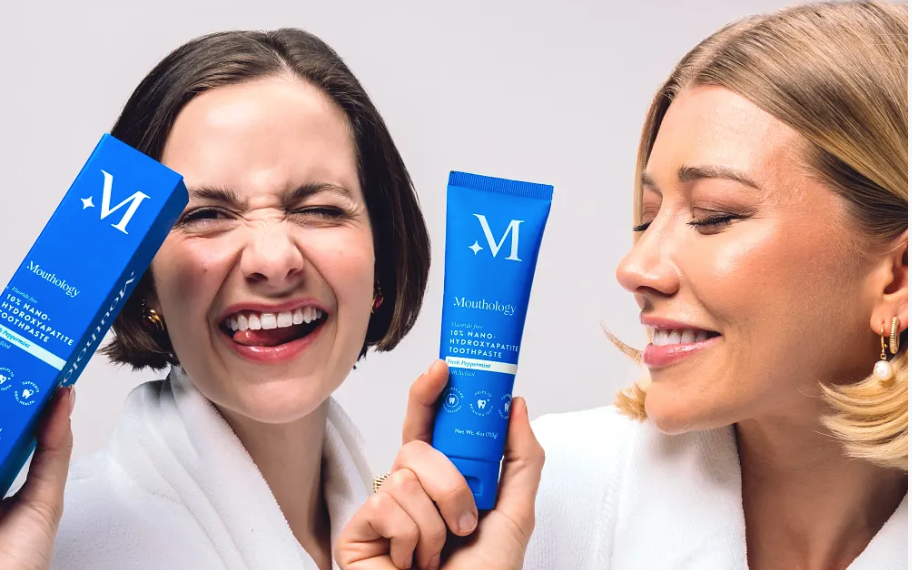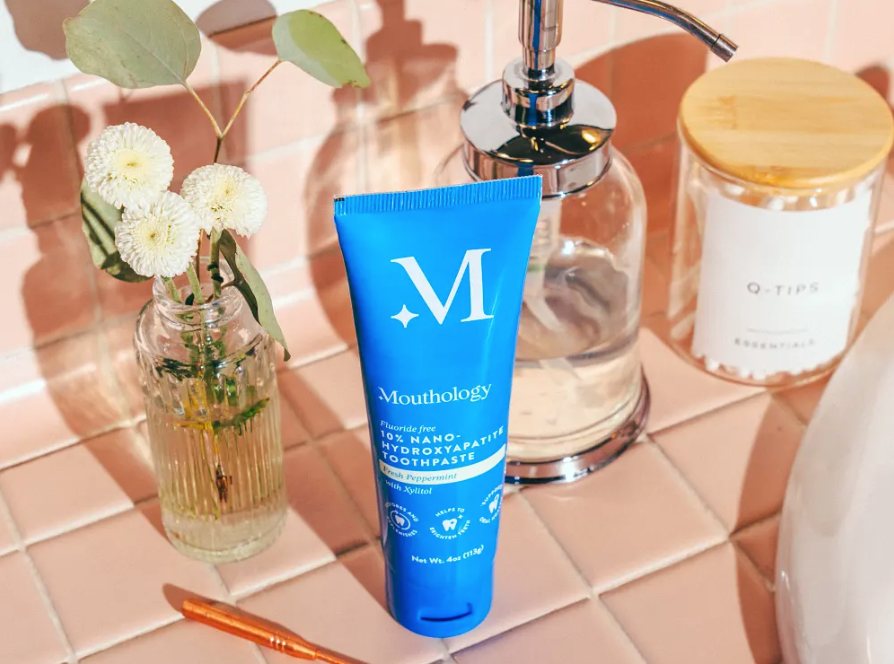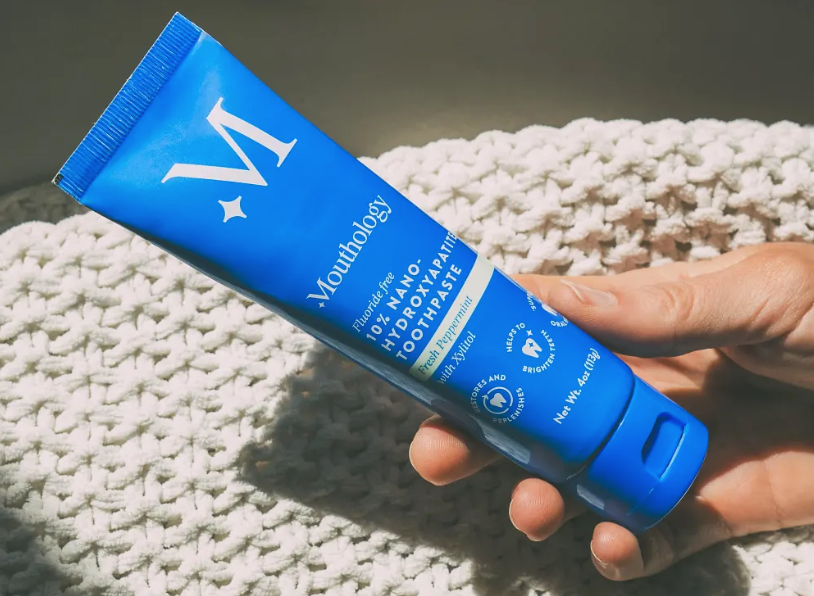Choosing the right toothpaste can feel overwhelming with so many options on the market. You might be surprised to learn that many conventional brands contain harsh chemicals and additives that may not be beneficial for your health. Instead of settling for these traditional choices, consider the growing trend of healthy toothpaste, which focuses on natural ingredients that support your oral health without the unwanted side effects.
Healthy toothpaste options often feature powerful ingredients like hydroxyapatite, which helps remineralize your enamel and combat cavities. These formulations are free from fluoride, sulfates, and artificial flavors, making them ideal for families seeking a gentler approach to oral care. By switching to a healthier alternative, you’re not just caring for your teeth—you’re also making a conscious choice for your overall well-being.
TOOTHPASTE PROPERTIES AND COMPOSITION
Understanding the properties and composition of toothpaste helps you choose the best products for oral health. Pay attention to active agents that promote precise benefits.
Antibacterial active agents
Antibacterial active agents in toothpaste effectively combat harmful bacteria. Common ingredients include sodium fluoride, triclosan, and essential oils like thymol and eucalyptol. Sodium fluoride strengthens enamel while providing antibacterial properties. Triclosan targets plaque-forming bacteria, reducing the risk of gum disease. Essential oils not only kill bacteria but also leave a refreshing taste. These antibacterial agents together promote a healthier mouth by minimizing plaque buildup and improving overall oral hygiene.
Anti-inflammatory active agents
Anti-inflammatory active agents in toothpaste play a vital role in reducing gum inflammation and maintaining oral health. Ingredients like aloe vera and calendula extract soothe irritated gums. These natural extracts demonstrate anti-inflammatory properties that help alleviate symptoms of gingivitis. Others, such as zinc chloride, act as antimicrobial agents while also providing anti-inflammatory benefits. Using toothpaste with these active agents contributes to a healthier gum environment, promoting healing and preventing the progression of periodontal diseases.
Desensitizing active agents
Desensitizing active agents target tooth sensitivity, providing comfort to those experiencing discomfort. Potassium nitrate serves as a primary ingredient, blocking pain signals from nerves within the teeth. Strontium chloride also offers desensitizing effects by sealing dentinal tubules. In formulations targeting sensitivity, these agents create a protective barrier, reducing discomfort associated with hot and cold stimuli. Toothpaste containing these active agents enables you to maintain oral hygiene without the pain often associated with sensitive teeth.
Active agents against halitosis
Active agents against halitosis effectively address bad breath, a common oral health concern. Ingredients such as zinc compounds and essential oils help neutralize odor-causing bacteria. Zinc chloride acts as an antimicrobial agent, minimizing bacteria growth and ensuring fresher breath. Essential oils, including peppermint and spearmint, provide a pleasant taste and aroma, further combating halitosis. Toothpaste formulated with these active agents contributes to a confident smile, helping you feel more comfortable in social situations.
Toothpaste cytotoxicity
Toothpaste cytotoxicity refers to the potential harmful effects of certain ingredients on oral tissues. Some chemical agents, including certain detergents and artificial additives, may exhibit cytotoxic properties. Ingredients that cause irritation or toxicity can lead to adverse oral health effects. Products labeled as natural typically avoid these harmful chemicals, using safer alternatives. It's crucial to select toothpaste with low cytotoxicity to ensure that daily oral care promotes health rather than causing harm.
Why Safe, Natural Toothpaste Matters
Choosing safe, natural toothpaste impacts your oral health and overall well-being significantly. Natural toothpaste avoids harsh chemicals that may cause irritation or long-term health issues. For instance, many conventional options contain sodium lauryl sulfate (SLS) and artificial preservatives, which can disrupt hormonal functions and irritate gums. By selecting a nontoxic alternative, you reduce exposure to these harmful substances.
Natural toothpastes utilize effective ingredients that promote holistic health. Baking soda, essential oils, and herbal extracts not only help prevent cavities but also maintain healthy gums. These ingredients neutralize acids and reduce harmful bacteria without harsh side effects. Aloe vera and green tea serve as excellent examples of natural components that support gum health and fight bacteria gently.
You also contribute to environmental sustainability by opting for natural toothpaste. Many brands prioritize eco-friendly practices, including sustainable sourcing and biodegradable packaging. This approach minimizes the environmental footprint of your oral care routine and aligns with a growing commitment to environmental health.
Natural toothpaste proves effective in maintaining dental health. Ingredients like xylitol and hydroxyapatite demonstrate clinical efficacy in combating decay and strengthening enamel naturally. Choosing products with low cytotoxicity ensures you prioritize safe oral care without sacrificing effectiveness.
By understanding the benefits of natural toothpaste, you make informed decisions for your family's dental hygiene. This awareness leads to healthier choices that align with your values of safety and sustainability. Switching to safe, natural toothpaste not only supports your dental health but also nurtures a healthier planet.
What’s Wrong with Conventional Toothpastes?
Conventional toothpastes often contain harmful ingredients that pose health risks. Many brands include sodium lauryl sulfate (SLS), which can irritate soft tissues in the mouth. Propylparaben, common in these formulations, raises concerns due to its potential link to reproductive damage and cancer. Moreover, triclosan, an antibacterial agent, can disrupt hormonal function and contribute to antibiotic resistance.
When examining kids' toothpastes, alarming ingredients emerge. Brands like Colgate incorporate propylene glycol, linked to cancer, and artificial colors associated with ADHD. These components pose real threats to children's health, particularly since kids often swallow toothpaste.
Fluoride is another questionable ingredient. While it helps prevent cavities at low doses, excessive exposure can lead to dental and skeletal fluorosis. This creates uncertainty around its use, especially in products marketed for young children.
Many conventional toothpastes also contain artificial flavors, preservatives, and other synthetic agents that may lead to adverse health effects. Notably, methylisothiazolinone and methylchloroisothiazolinone can trigger allergic reactions in sensitive individuals.
Examining the ingredient labels of conventional toothpastes reveals numerous unfavorable components. Recognizing these risks helps in the pursuit of safer, healthier alternatives that prioritize your well-being and that of your family. Selecting toothpaste with natural ingredients not only avoids harmful substances but also promotes better oral health and a cleaner environment.
Toxic Ingredients in Toothpaste
You should be aware of several toxic ingredients commonly found in toothpaste that can pose health risks. Here’s a breakdown of these harmful components:
-
Sodium Lauryl Sulfate (SLS): This foaming agent can irritate your mouth and skin. Many dental professionals recommend avoiding SLS, especially since it's absorbed during brushing.
-
Parabens: Often used as preservatives, parabens mimic estrogen and may be linked to breast cancer. Though studies have not confirmed a direct causal relationship, it's wise to avoid them whenever possible.
-
Triclosan: An antibacterial chemical tied to hormone disruption and antibiotic resistance. Its widespread use raises concerns about long-term health effects.
-
Artificial Colors: These synthetic dyes, frequently found in children's toothpaste, may be associated with ADHD and other health issues. Opting for natural flavorings can eliminate this risk.
-
Propylene Glycol: This ingredient enhances the texture of toothpaste but is linked to severe skin irritation and reproductive harm.
-
Titanium Dioxide: Often used for coloring, titanium dioxide can be carcinogenic in nanoparticle form. It poses potential risks when absorbed through the mouth’s lining.
-
Fluoride: While useful for cavity prevention, excessive fluoride can result in dental and skeletal fluorosis. Assess your need for fluoride carefully based on your health status and dental recommendations.
You should check labels thoroughly to avoid these ingredients and prioritize natural, safe alternatives. Many toothpastes on the market emphasize non-toxic components like xylitol and valuable minerals, which support oral health without compromising safety.
Is Hydroxyapatite a Safe Alternative to Fluoride?
Hydroxyapatite presents a safe alternative to fluoride in toothpaste formulations. This naturally occurring mineral is the primary component of tooth enamel and contributes to remineralization, effectively repairing microscopic enamel damage. Research indicates that hydroxyapatite forms a protective layer on tooth surfaces, enhancing overall oral health and preventing cavities.
Hydroxyapatite shows superior bioavailability compared to fluoride, meaning your body absorbs it efficiently. Using hydroxyapatite in toothpaste promotes a more natural remineralization process. A study published in the National Institutes of Health highlights its efficacy in restoring enamel and reducing the risk of tooth decay. Unlike fluoride, which can pose risks of dental and skeletal fluorosis with overexposure, hydroxyapatite lacks such associated health concerns.
Generally, consumers looking for fluoride-free toothpaste find hydroxyapatite an appealing option. It caters to various demographics, including children, nursing mothers, and individuals with fluoride allergies. You can trust that hydroxyapatite supports enamel strength without the potential side effects associated with fluoride.
When selecting toothpaste, check labels carefully. Look for formulations that specify larger particle sizes of hydroxyapatite, between 20μm to 40μm, to ensure optimal results. Additionally, consider products free from harsh ingredients such as sodium lauryl sulfate (SLS), artificial preservatives, and sweeteners. By prioritizing toothpaste with hydroxyapatite, you embrace a safer, effective approach to maintaining dental health without compromising your values.
Natural Toothpaste Ingredients I am NOT Worried About
Several ingredients commonly found in natural toothpaste are generally considered safe and effective for oral health. These ingredients contribute to cleaning, whitening, and protecting your teeth without harmful side effects.
-
Glycerin: Though controversial, it's widely used in both natural and conventional toothpastes. Glycerin doesn’t significantly block the remineralization process of your teeth. Thus, many safe toothpastes include glycerin while maintaining oral health.
-
Clays: Ingredients like bentonite clay may contain trace amounts of lead. However, extensive research shows that when sourced responsibly, these clays are safe for use in toothpastes. They act as mild abrasives helping to clean your teeth.
-
Baking Soda: This natural ingredient whitens and cleans teeth by gently removing surface stains. Its abrasiveness is effective yet gentle enough for everyday use.
-
Coconut Oil: Known for its antimicrobial properties, coconut oil helps reduce plaque buildup and gum disease. Its soothing qualities make it ideal for sensitive gums.
-
Essential Oils: Oils like peppermint or tea tree provide natural flavor and antibacterial benefits. They promote fresh breath and overall oral health.
-
Plant Extracts: Ingredients such as aloe vera soothe gums, while stevia enhances flavor without causing tooth decay. Green tea extract offers antioxidant properties to support overall health.
-
Hydroxyapatite: This naturally occurring mineral serves as a safe fluoride alternative. It effectively remineralizes and strengthens enamel, making it beneficial for maintaining teeth.
These natural ingredients ensure a gentle yet effective clean suitable for all ages. When selecting toothpaste, look for these components to support oral health safely and sustainably.
What Is the best Non Toxic Baby Safe Toothpaste?
Selecting non-toxic, baby-safe toothpaste is crucial for parents who prioritize their child’s health. Look for toothpaste that specifically states it's safe for infants and toddlers. Key ingredients should include natural antibacterial agents and gentle abrasives. Avoid products containing fluoride, artificial colors, and chemicals like propylene glycol, which can pose health risks.
Recommended Ingredients
-
Xylitol
Xylitol is a natural sweetener that helps reduce bacteria in the mouth. It promotes dental health without the risks associated with sugar.
-
Calcium Carbonate
Calcium carbonate acts as a gentle abrasive to clean teeth effectively and support enamel.
-
Aloe Vera
Aloe vera is known for its soothing properties, making it ideal for sensitive gums and oral tissues.
-
Coconut Oil
Coconut oil has antimicrobial properties, helping to maintain oral hygiene while being gentle on young mouths.
Product Certifications
Check for certifications that ensure product safety and transparency. Certifications from organizations focusing on holistic health can indicate a commitment to high-quality, non-toxic ingredients.
Brand Ethos
Choose brands with a philosophy centered around health, safety, and environmental sustainability. Brands that prioritize these values are likely to offer toothpastes free from harmful substances.
Notable Options
Several products on the market stand out for their quality and safety. Look for those with short ingredient lists free from harmful additives. Natural fruit flavors, like strawberry, often appeal to children while maintaining a focus on safety.
By focusing on these criteria, you can select a baby-safe toothpaste that supports your child's dental health without exposing them to harmful chemicals.
Bad Stuff: Big Name Toothpastes to Avoid
Many popular toothpaste brands tout safety and effectiveness, yet they often contain troubling ingredients. Avoid toothpastes with the following components:
-
Sodium Lauryl Sulfate (SLS): This foaming agent can irritate oral tissues and contribute to mouth ulcers. It's especially concerning since toothpaste is swallowed.
-
Parabens: Common preservatives linked to hormonal disruption and potential cancer risks. Look for parabens in your toothpaste and choose alternatives without them.
-
Triclosan: An antibacterial ingredient associated with antibiotic resistance and hormone disruption. Seek toothpastes free from this component.
-
Artificial Colors: Often derived from synthetic sources, these dyes can cause allergic reactions and link to ADHD, particularly in children’s toothpaste. Opt for naturally colored products instead.
-
Propylene Glycol: This substance raises red flags due to its association with cancer and reproductive harm. Avoid it in any toothpaste formulation.
-
Titanium Dioxide: Utilized for whitening, it's linked to potential health risks. Prioritize toothpastes that do not include this ingredient.
-
Fluoride: Although it helps prevent cavities, excessive fluoride exposure can lead to dental and skeletal fluorosis. Evaluate the fluoride content of your toothpaste.
Notorious brands often contain several of these harmful components. It's crucial to read labels carefully and choose toothpastes that align with health-focused values. Always prioritize products formulated with safe, natural ingredients that promote oral health without the negative side effects commonly found in conventional options.
Sneaky Stuff: Greenwashed Natural Toothpastes
Greenwashing can make it difficult to identify truly natural toothpastes. Recognize common indicators of deceptive marketing tactics to make informed choices.
-
Vague Claims: Be cautious of terms like "natural" or "green" lacking specifics or certifications. These labels often lack accountability and don’t guarantee safety.
-
Lack of Transparency: If brands avoid sharing ingredient sourcing details or manufacturing processes, it raises concerns. Seek companies that provide clear, comprehensive information.
-
Misleading Certifications: Some products showcase certifications that appear valid but are self-awarded or irrelevant. Verify the credibility of eco-labels used on packaging.
-
Contradictory Ingredients: Products claiming eco-friendliness may contain harmful or synthetic components. Look for ingredients that align with health-conscious values, avoiding substances linked to health risks.
Top brands may also include unwanted ingredients, even in supposedly natural options. For instance, Toms of Maine toothpaste often contains sodium lauryl sulfate unless indicated as SLS-free. Always review ingredient lists to avoid surprises.
To make an informed choice, prioritize toothpastes with credible certifications such as USDA Organic, Leaping Bunny, or EWG Verified. These ensure safety, ethical standards, and absence of harmful chemicals.
Commit to products that focus on health and sustainability, steering clear of those at risk of greenwashing. Select toothpastes that genuinely enhance your oral health while reflecting your values.
Key Takeaways
-
Opt for Natural Ingredients: Healthy toothpaste alternatives prioritize natural ingredients, avoiding harsh chemicals like fluoride, SLS, and parabens, which can be detrimental to your health.
-
Understand Active Agents: Key active agents such as hydroxyapatite, aloe vera, and xylitol contribute to oral health by strengthening enamel, reducing inflammation, and combating bacteria.
-
Choose Low-Cytotoxic Products: Selecting toothpaste with low cytotoxicity ensures daily oral care promotes health without harmful effects on oral tissues.
-
Research Toothpaste Labels: Be vigilant in reading ingredient labels to avoid harmful substances commonly found in conventional brands, including artificial colors and certain preservatives.
-
Support Sustainability: Many natural toothpaste brands emphasize eco-friendly practices, contributing positively to both personal health and the environment.
-
Educate on Baby-Safe Options: For families, it's crucial to choose non-toxic toothpaste for children that features safe, gentle ingredients to support their dental health without safety concerns.
Questions About Nano-hydroxyapatite Toothpastes
Choosing the right toothpaste can significantly impact your oral health and overall well-being. By opting for healthy toothpaste options that prioritize natural ingredients, you're not just protecting your teeth but also making a conscious choice for your family's health. Remember to look for products that avoid harmful chemicals and focus on safe alternatives like hydroxyapatite.
As you navigate the toothpaste aisle, keep in mind that transparency and ingredient integrity matter. Prioritizing brands with credible certifications can help you make informed decisions. Your smile deserves the best care, so embrace healthier options that align with your values and support your oral health journey.
Frequently Asked Questions
Is natural toothpaste effective?
Yes, natural toothpaste can be very effective for maintaining oral health. Many products include beneficial ingredients like hydroxyapatite and essential oils that help remineralize enamel and prevent cavities without harsh chemicals.
Are there harmful ingredients in conventional toothpaste?
Yes, conventional toothpaste often contains harmful ingredients like SLS, triclosan, and artificial colors, which can irritate gums, disrupt hormonal functions, and pose potential health risks.
What benefits do ingredients like hydroxyapatite offer?
Hydroxyapatite is known for its ability to remineralize enamel, repair microscopic damage, and prevent cavities. It provides a natural alternative to fluoride, promoting overall oral health without associated risks.
How can I choose a safe toothpaste for my child?
Select toothpaste specifically labeled for infants and toddlers, featuring gentle ingredients like xylitol and aloe vera. Look for certifications that ensure product safety and prioritize short ingredient lists.
What should I avoid in toothpaste for children?
Avoid toothpastes containing harsh chemicals such as SLS, parabens, and artificial colors. These ingredients can be harmful to young mouths and may cause irritation or disrupt health.
How do I know if a toothpaste is truly natural?
Check for credible certifications like USDA Organic or EWG Verified. Be cautious of vague marketing claims and ensure transparency regarding ingredients to confirm that the product aligns with your health and sustainability values.
What are the benefits of using non-toxic toothpaste?
Non-toxic toothpaste promotes oral health without harsh chemicals or additives that can irritate gums or disrupt bodily functions. These products often support sustainable practices and are safer for both people and the environment.
Why should I avoid fluoride in toothpaste?
Excessive fluoride can lead to dental fluorosis, causing discoloration of the enamel, particularly in children. While it can help prevent cavities, moderation is crucial to avoid adverse effects.




